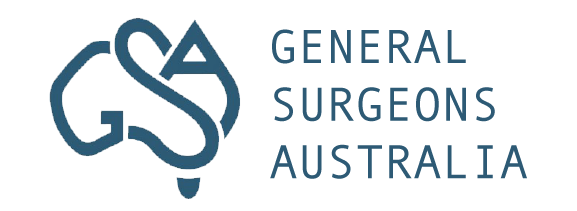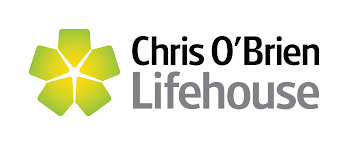Lactational Mastitis
What is Lactational Mastitis?
Lactational mastitis is an inflammatory condition of the breast tissue that occurs predominantly among breastfeeding women. This inflammation can sometimes involve an infection. The condition typically presents as redness, swelling, pain, and warmth in one breast and can be accompanied by flu-like symptoms, including fever and malaise.
How Does Lactational Mastitis Impact Your Anatomy and Health?
Lactational mastitis primarily affects the milk ducts and surrounding tissues in the breast. The inflammation can cause blockages in the milk ducts, leading to pain and swelling. If an infection is present, bacteria can multiply, leading to increased inflammation and the potential formation of an abscess if not treated promptly. This can make breastfeeding painful and challenging, potentially interfering with a mother's ability to feed her infant and maintain her milk supply.
Untreated mastitis can lead to more severe infections and complications like a breast abscess, which might require surgical intervention. The stress and pain associated with mastitis can also impact overall well-being and mental health, contributing to conditions such as postpartum depression.
Risk Factors for Lactational Mastitis
Lactational mastitis is most common in breastfeeding women, particularly within the first three months postpartum, though it can occur at any time during breastfeeding. Factors that increase the risk of developing mastitis include:
- Improper Latching: If the baby does not latch properly, it can lead to incomplete emptying of the breast, which predisposes to milk stasis and infection.
- Irregular Breastfeeding: Skipping feedings or going long periods without either breastfeeding or expressing milk can lead to milk accumulation and increased pressure in the milk ducts.
- Cracked or Sore Nipples: Damaged skin around the nipples can provide an entry point for bacteria, leading to infection.
- Fatigue and Stress: High-stress levels and lack of rest can impair the immune system, making it easier for an infection to take hold.
- Previous Breast Surgery or Trauma: Any prior surgery or trauma to the breast can alter the natural structure of the breast and potentially contribute to milk stasis or infection.
Causes of Lactational Mastitis
Lactational mastitis is primarily caused by milk stasis, which occurs when milk is not properly or completely expressed from the breast. This can lead to inflammation and possibly infection. The common causes include:
- Blocked Milk Ducts: Milk ducts can become blocked due to insufficient draining of the breast, often caused by poor latch, infrequent breastfeeding, or restrictive clothing.
- Bacterial Infection: Bacteria from the skin or the baby's mouth can enter the breast through cracks or sores on the nipples. This is more likely if there is already milk stasis.
- Engorgement: Overfull breasts can lead to engorgement, making it difficult for the baby to latch properly and exacerbating the risk of blocked ducts and mastitis.
- Weaning: Rapid weaning can lead to engorgement and increased risk of mastitis as the breasts adjust to the decreased demand for milk.
Symptoms of Lactational Mastitis
The symptoms of lactational mastitis can develop suddenly and may include:
- Breast Tenderness or Warmth: The affected breast may feel tender to the touch, warm, and appear red.
- Breast Swelling: Swelling and firmness can occur in the affected area.
- Pain or Burning Sensation During Breastfeeding: Pain is often felt continuously in the breast but can worsen during feeding.
- Skin Redness: Often in a wedge-shaped pattern, indicating the affected breast area.
- Flu-like Symptoms: Many women experience fever, chills, and body aches similar to flu symptoms.
- Fatigue: A general feeling of malaise or tiredness is common.
Types of Lactational Mastitis
Lactational mastitis can be classified into two main types:
- Non-infectious Mastitis: This type is primarily caused by milk stasis without an infection. It is typically managed by improving milk flow, using techniques to effectively empty the breast, and addressing breastfeeding mechanics.
- Infectious Mastitis: When bacteria invade the breast tissue, leading to infection. This type might require antibiotic treatment to resolve the infection and manage milk flow.
Stages of Lactational Mastitis
Lactational mastitis can generally be thought of in terms of a progression from mild to severe, although not all cases necessarily evolve through these stages:
- Milk Stasis: The initial stage involves milk building up in the breast, often due to inadequate draining. This can feel uncomfortable but does not involve infection.
- Inflammatory Mastitis: If the stasis continues, inflammation can set in, leading to symptoms of pain, swelling, and redness.
- Infectious Mastitis: When bacteria enter the picture, either through cracks in the nipple or blocked ducts, the inflammation can become an infection. Worsening symptoms, including fever and flu-like symptoms, mark this stage.
- Abscess Formation: If infectious mastitis is not treated, an abscess can form. This pocket of pus may require surgical drainage.
Diagnosis of Lactational Mastitis
- Medical History: Discussing breastfeeding practices, the onset of symptoms, and any previous episodes of mastitis.
- Physical Examination: Examining the breasts for signs of redness, swelling, warmth, and tenderness.
- Temperature Measurement: Fever is often present in cases of infectious mastitis.
- Laboratory Tests: While not always necessary, milk or blood cultures may be performed if the infection does not respond to initial antibiotic treatment or is severe.
Treatment of Lactational Mastitis
- Continued Breastfeeding: It is important to keep the affected breast empty. Breastfeeding should continue if possible, as it helps clear the blockage and infection.
- Warm Compresses: Applying warmth to the affected area can improve blood and milk flow.
- Manual Expression: If breastfeeding is too painful, manual expression or using a breast pump can help relieve engorgement.
- Proper Breastfeeding Techniques: Ensuring the baby is properly latched can prevent future episodes.
- Antibiotics: Prescribed if bacteria are suspected or confirmed, particularly if symptoms are severe or there is no improvement with initial measures.
- Pain Relief: Over-the-counter pain relievers like ibuprofen can reduce pain and inflammation.
What if Lactational Mastitis is Untreated?
If lactational mastitis is left untreated, the condition can worsen and lead to serious complications:
- Abscess
- Chronic Infection
- Reduced Milk Supply:
- Psychological Impact
Prompt and effective mastitis treatment helps in quicker recovery and ensures sustained breastfeeding, which is beneficial for both mother and child.









